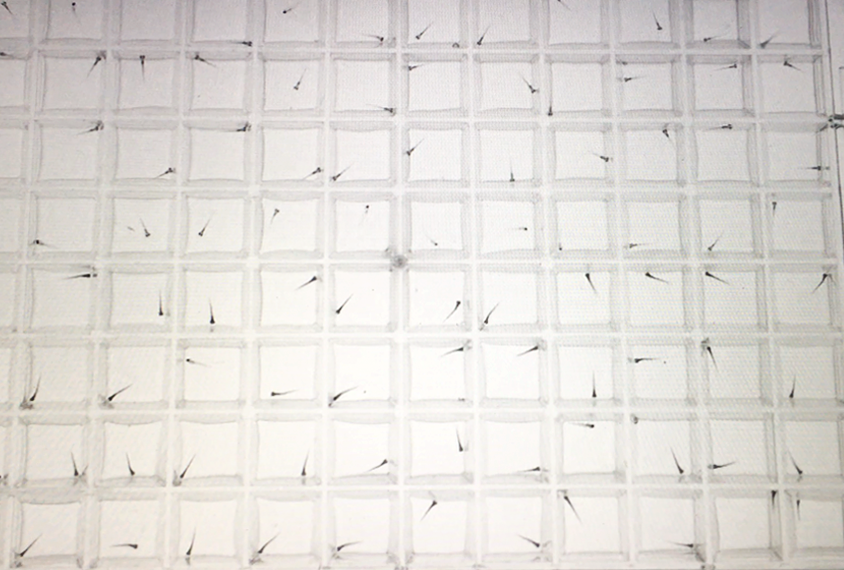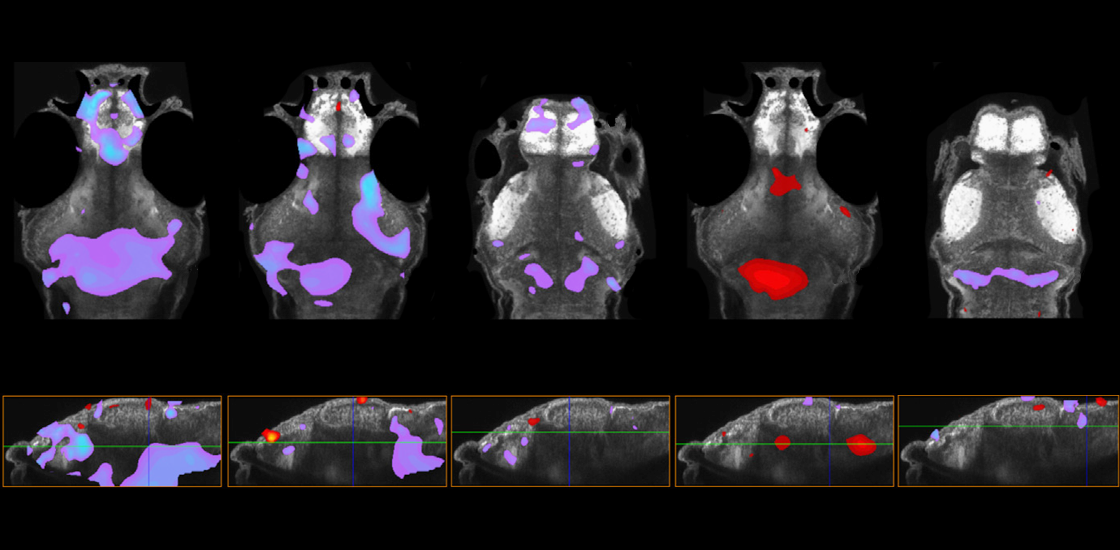Mutations in any of 10 genes strongly linked to autism have several converging effects on brain size, activity and behavior in zebrafish via pathways that involve the proliferation of dopamine neurons and microglia, according to a new study.
None of the mutations cause identical changes. But their varied effects on brain size occur largely in the forebrain and cerebellum, and their influence on activity comes mainly from the thalamus and dopamine neurons, the study shows. And all 10 genes cluster into three groups based on how they affect the sleep and sensory-processing behaviors of zebrafish.
“We were able to identify subgroups of autism genes that share related behavioral features,” says lead investigator Ellen Hoffman, associate professor in the Child Study Center at Yale University. “We’re hoping in future studies to leverage these subgroups to identify potential pharmacological targets using a precision medicine approach.”
Hoffman and her colleagues used gene-editing tools to introduce damaging mutations into autism-linked genes that are known to have diverse functions: CHD8, CUL3, KDM5B, POGZ and TBR1 regulate gene expression; CNTNAP2, SCN1LAB (the zebrafish version of SCN1A and SCN2A) and GRIN2B facilitate communication among neurons; and DYRK1A and KATNAL2 are involved with cell-structure components, including microtubules and cytoskeletons.
The team uncovered the points of convergence by analyzing more than 7,500 larval zebrafish in a battery of tests: They imaged each animal’s brain structure and volume, stained a protein called phosphorylated ERK as a proxy of brain activity, and used automated motion-tracking cameras to monitor the larva’s sleep-wake cycles and observe its responses to sudden light or dark exposures. The findings were published in Cell Reports in March.
“The approach of this work is exactly where we need to be these days,” says Helen Willsey, assistant professor of psychiatry and behavioral sciences at the University of California, San Francisco, who was not involved in the new study. “We’re starting to understand how these seemingly disparate genes actually do similar things during brain development, and then being able to leverage that to figure out how to reverse it.”
H
offman’s team studied the DYRK1A and SCN1LAB models in further depth, because those two showed the greatest changes across all the assays.Both models significantly downregulated genes associated with neurogenesis and dopamine signaling, RNA sequencing showed. They also have a decrease in the number of dopamine neurons in the forebrain.

The fish also showed upregulation of microglia-associated genes and greater numbers of microglia throughout the entire brain. Increased microglia expression can boost synaptic pruning and may explain the reduced brain volume seen in the two models.
This convergence suggests that there could be common druggable targets for autism subtypes that were not previously known to be related, says Holly Stessman, assistant professor of pharmacology and neuroscience at Creighton University in Omaha, Nebraska, who was not involved in the study. “Taking individual genes and going down the rabbit hole is going to be the way that we are now going to move the field a big pace forward,” Stessman says.
The study is thorough and high quality, but it also reflects some limitations of the methods used in the autism genetics field, says Hazel Sive, dean of the College of Science at Northeastern University in Boston, Massachusetts, who was not involved in the work. For instance, all the animals in this study had two nonfunctional copies of the gene in question, but people with the same variant tend to only have one, with the other remaining intact.
Hoffman and her colleagues are now screening drugs on the subgroups with similar behavioral profiles to see if any molecules can address multiple genetic models. They are also imaging the brains of live fish to observe dopamine circuit development and investigating the mechanisms that contribute to the global increases in microglia.






